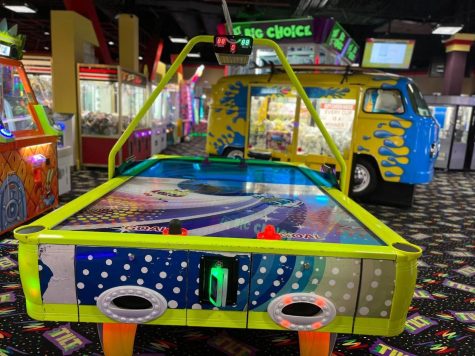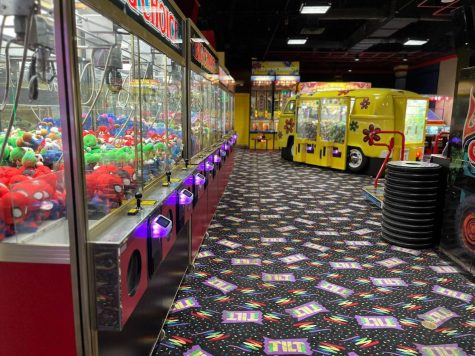The death of arcades
When pop culture become unpopular and resulted in the slow death of the video game industry
A person plays alone at an arcade machine.
In the pursuit of entertainment, the creation of the first-ever commercial video game Computer Space was born and soon after came the birth of the establishments that housed multiple coin-operated video games which we know today as “arcades.”
Excluding the pin-ball machines and skee-ball stands of the ‘30s, the arcade scene experienced incredible success in the era of the late ‘70s to the mid ‘80s, now referred to as the golden age of arcades.
What started off as electronic entertainment for a modest-sized demographic in a particular area eventually grew into becoming an industry of its own that we now consider to be the gaming industry.

As time went on, the success of arcades only grew, making the event of going to an arcade appear to be a prominent part of American culture in the ‘80s and as such became a staple of that decade.
The success and triumph of the industry only seemed to grow, but unfortunately advances in technology are constant and with that comes the eradication of activities and the phenomena of obsoletism. Eventually, the arcade scene became outdated and suffered from a loss in popularity.
Today, the culture surrounding arcades is not as prevalent as it once was. In the golden age of the scene, there were over 24,000 arcades. In the modern day, there are an estimated 7,206 arcade businesses.
In the last five years alone, the U.S. arcade industry decreased by 8.2%.

With a continuing decline in the general public’s interest in arcade gaming, there is a perceived “death” of the arcade industry, which then begs the question of just what it was that killed arcades.
A culprit behind the loss of arcades’ popularity could quite possibly be due to what is known as the “video game crash of 1983.” This was a large occurrence in the video game industry that was caused by high levels of competition in the industry that caused an oversaturation of video games, often of poor quality, rushed out in the hopes of beating out the competition.

From 1983 to 1985, the gaming market witnessed a loss of revenue that totaled $11,900,000,000.
The arcade industry was almost completely killed but managed to be sustained, that was, until home video game consoles came about.
The birth of gaming consoles heralded the death of arcades.
In 1972, home electronics corporation Magnavox created a product called the Odyssey which became the first home video game console.

This meant that one could access and play their favorite video games without worry. Instead of taking a trip to the local arcade to play your favorite game, one would put a gaming cartridge into the slot of a video game console and be able to play their favorite game from the comfort of their own home.
From there, the plug-and-play gaming systems became outdated and the industry revamped itself, making consoles more portable and of better quality, which led to the results of widely-known gaming systems as old as the Game Boy up to the current Nintendo Switch, PlayStation 5, Steam Deck, Xbox Series X/S, etc.
Once it became easier to play games in everyday life, the portable gaming console became difficult to pry out of the hands of both children and grown adults.

Consoles’ rise in popularity – reflected by 53% of U.S. households admitting to having a gaming console – created a newfound sense of power and presence in the market.
There was no longer a need to go to an arcade: a friend’s house with a console replaced it as the go-to spot for after-school hangouts.
Not only was there an advancement in gaming technology, there were also changes in the cellphone industry which included the first mobile phone and the first iPhone; both of which were capable of downloading video games like Tetris and Snake.
In comparison to all other forms of entertainment industries, “The market size of the Arcade, Food & Entertainment Complexes industry in the U.S. declined faster than the economy overall,” according to IBISWorld.
Arcades were no longer on every block and beloved arcade games were turned into apps for cell phones or discs/downloadable content you could access from home, bringing the expansive catalog of an arcade to the palm of your hand, causing hundreds, upon thousands of arcades in the U.S. to shut down contributing to the demise of the arcade industry.



